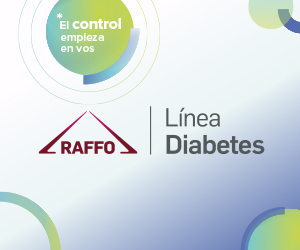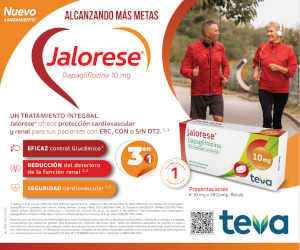TABLE 2: TECHNOLOGICAL INNOVATIONS IN THE TREATMENT OF TYPE 1 DIABETES MELLITUS
DOI:
https://doi.org/10.47196/diab.v49i3.634Keywords:
technological innovations, treatment, type 1 diabetes mellitusAbstract
The objective of intensified treatment of diabetes is to achieve and maintain adequate metabolic control without increasing the risk of hypoglycemia in order to avoid or delay the onset of chronic complications. Insulin therapy is intended to imitate, as accurately as possible, the normal secretion of this hormone, with two strategies whose feasibility has been extensively tested: basalbol treatment with multiple doses of insulin (MDI) and continuous subcutaneous insulin infusion ( ICIS) through the use of microinfusers1. With this last method, the insulin levels obtained would be closer to the physiological profile2.
References
I. Salacinski AJ, Alford M, Drevets K, Hart S, Hunt BE. Validity and reliability of a glucometer against industry reference standards. Journal of Diabetes Science and Technology 2014; 8(1):95-9.
II. Klonoff DC. Noninvasive blood glucose monitoring. Diabetes Care 1997; 20(3): 433-7.
III. Koschinsky T, Jungheim K, Heinemann L. Glucose sensors and alternate site testing-like phenomenon: relationship between rapidblood glucose changes and glucose sensor signals. Diabetes Technol. Ther. 2003;5: 829-42.
IV. The Diabetes Control and Complications Trial Research Group. The effect of intensive treatment of diabetes on the development and progression of long-term complications in insulindependent diabetes mellitus. N. Engl. J. Med. 1993; 329:977-986
V. UK Prospective Diabetes Study Group. Intensive blood glucose control with sulphonylureas or insulin compared with conventional treatment and risk of complications in patients with type 2 diabetes (UKPDS 33). Lancet. 1998; 352(9131):837-53.
VI. Rabinovitch B, March WF, Adams RL. Noninvasive glucose monitoring of the aqueous humor of the eye: part I. Measurement of very small optical rotations. Diabetes Care 1982; 5: 254-8.
VII. So CF, Choi KZ, Wong TKS, Chung JWY. Recent advances in noninvasive glucose monitoring. Medical devices: evidence and research 2012; 5:45-52.
VIII. La Belle JT, Engelschall E, Lan K. A disposable tear glucose biosensor. Journal of Diabetes Science and Technology 2014; 8:109-16.
IX. Alexeev VL, Das S, Finegold DN, Asher SA. Photonic crystal glucose-sensing material for noninvasive monitoring of glucose in tear fluid. Clinical Chemistry 2004; 50:12 2353-60.
X. Mascarenhas P, Fatela B, Barahona I. Effect of diabetes mellitus type 2 on salivary glucose. A systematic review and metaanalysis of observational studies. PLOS ONE 2014; 9:1-15.
XI. Satish BN, Srikala P, Maharudrappa B. A tool in assessing glucose levels in Diabetes Mellitus. Journal of International Oral Health 2014; 6:114-17.
XII. Malik BH, Pirnstill CW, Coté GL. Dual-wavelength polarimetric glucose sensing in the presence of birefringence and motion artifact using anterior chamber of the eye phantoms. Journal of Biomedical Optics 2013; 18: 017007-1-9
XIII. Müller AJ, Knuth M, Nikolaus KS. First clinical evaluation of a new long-term subconjunctival glucose sensor. Journal of Diabetes Science and Technology 2012; 6:875-83.
XIV. Park HD, Lee KJ, Yoon HR, Nam HH. Design of a portable urine glucose monitoring system for health care. Comput Biol. Med. 2005; 35:275-86.
XV. Roberts K, Jaffe A, Verge C. Noninvasive monitoring of glucose levels: is exhaled breath the answer? Journal of Diabetes Science and Technology, 2012;6:659-64.
XVI. Khalil OS. Non-invasive glucose measurement technologies: an update from 1999 to the dawn of the new millennium. Diabetes Technol. Ther 2004; 6:5, 660-97.
XVII. Rohrscheib M, Robinson R, Eaton RP. Non-invasive glucose sensors and improved informatics. The future of diabetes management. Diabetes Obes. Metab. 2003; 5:280-4.
XVIII. Kottmann J, Rey JM, Luginbuhl J. Glucose sensing in human epidermis using mid-infrared photoacoustic detection. Biomedical Optics Express 2012; 3:667-80.
XIX. Kino S, Tanaka Y, Matsuura Y. Blood glucose measurement by using hollow optical fiber-based attenuated total reflection probe. Journal of Biomedical Optics 2014; 19:057010-1-3.
XX. Guo X, Mandelis A, Zinman B. Noninvasive glucose detection in human skin using wavelength modulated differential laser photothermal radiometry. Biomedical Optics Express 2012;3:3012-21.
XXI. Müller AJ, Knuth M, Nikolaus KS. Blood glucose self-monitoring with a long-term subconjunctival glucose sensor. Journal of Diabetes Science and Technology 2013; 7:24-34.
XXII. Baba JS, Cameron BD, Theru S, Coté GL. Effect of temperature, pH, and corneal birefringence on polarimetric glucose monitoring in the Eye. J. Biomed. Opt. 2002; 7:321-8.
XXIII. Burmeister JJ, Arnold MA, Small GW. Noninvasive blood glucose measurements by near-infrared transmission spectroscopy across human tongues. Diabetes Technol. Ther 2000; 2:5-16.
XXIV. Malchoff CD, Shoukri K, Landau JI, Buchert JM. A novel noninvasive blood glucose monitor. Diabetes Care 2002; 25:2268-75.
XXV. Yoo EH, Lee SY. Glucose biosensors: an overview of use in clinical practice. Sensors 2010; 10: 4558-76.
XXVI. Arnold MA, Small GW. Perspectives in analytical chemistry: noninvasive glucose sensing. Anal Chem. 2005; 77:5429-39.
XXVII. Ciudin A, Hernández C, Simó R. Non-invasive methods of glucose measurement: current status and future perspectives. Current Diabetes Reviews 2012; 8:48-54.
XXVIII. Oliver NS, Toumazou C, Cass AE, Johnston DG. Glucose sensors: a review of current and emerging technology. Diabet Med 2009; 26:197-210.
XXIX. Vaddiraju S, Burgess DJ, Tomazos I. Technologies for continuous glucose monitoring: current problems and future promises. Journal of Diabetes Science and Technology 2010; 4:1540-62.
XXX. Yum K, McNicholas TP, Mu B. Single-walled carbon nanotubebased near-infrared optical glucose sensors toward in vivo continuous glucose monitoring. J. Diabetes Sci. Technol 2013; 7: 72-87.
XXXI. Zhang W, Liu R, Zhang W, Jia H, Xu K. Discussion on the validity of NIR spectral data in non-invasive blood glucose Sensing. Biomedical Optics Express 2013; 4: 789-802.
XXXII. Liakat S, Bors KA, Xu L. Noninvasive in vivo glucose sensing on human subjects using mid-infrared light. Biomedical Optics Express 2014; 5:2397-2404.
XXXIII. Zhang Y, Wu G, Wei H. Continuous noninvasive monitoring of changes in human skin optical properties during oral intake of different sugars with optical coherence tomography. Biomedical Optics Express 2014; 5:990-99
XXXIV. Yeh SJ, Hanna CF, Khalil OS. Monitoring blood glucose changes in cutaneous tissue by temperature-modulated localized reflectance measurements. Clinical Chemistry 2003; 49:924-34.
XXXV. Pleitez MA, Hertzberg O, Bauer A. Photothermal deflectometry enhanced by total internal reflection enables non-invasive glucose monitoring in human epidermis. Analyst 2015; 140:483-88.
XXXVI. Shao J, Lin M, Li Y. In vivo blood glucose quantification using raman spectroscopy. Plos One 2012; 7:1-6.
XXXVII. Ge X, Rao G, Kostov G. Detection of trace glucose on the surface of a semipermeable membrane using a fluorescently labeled glucose-binding protein: a promising approach to noninvasive glucose monitoring. Journal of Diabetes Science and Technology 2013; 7:4-12.
XXXVIII. MacKenzie HA, Ashton HS, Spiers S, et al. Advances in photoacoustic noninvasive glucose testing. Clin. Chem. 1999; 45:1587-95.
XXXIX. Purvinis G, Cameron BD, Altrogge DM. Noninvasive polarimetric-based glucose monitoring: an in vivo study. Journal of Diabetes Science and Technology 2011; 5:380-387.
XL. Adamson TL, Eusebio FA, Cook CB, LaBelle JT. The promise of electrochemical impedance spectroscopy as novel technology for the management of patients with diabetes mellitus. Analyst 2012; 137:4179-87.
XLI. Tao D, Adler A. In vivo blood characterization from bioimpedance spectroscopy of blood pooling. IEEE Transactions on Instrumentation and Measurement 2009; 58:3831-3838.
XLII. Sieg A, Guy RH, Delgado-Charro MB. Noninvasive glucose monitoring by reverse iontophoresis in vivo: application of the internal standard concept. Clin. Chem. 2004; 50:1383-90.
XLIII. Gourzi M, Rouane A, Guelaz R. Non-invasive glycaemia blood measurements by electromagnetic sensor: study in static and dynamic blood circulation. J. Med. Eng. Technol. 2005; 29:22-26.
XLIV. Tura A, Sbrignadello S, Cianciavicchia D, Pacini G, Ravazzani P. A low frequency electromagnetic sensor for indirect measurement of glucose concentration: in vitro experiments in different conductive solutions. Sensors (Basel). 2010; 10:5346-58.
XLV. Ramchandani N, Heptulla RA. New technologies for diabetes: a review of the present and the future. International Journal of Pediatric Endocrinology 2012; 2012:28,1-10.
XLVI. Gal A, Harman-Boehm I, Raykhman AM. Noninvasive glucose monitoring: a novel approach. Journal of Diabetes Science and Technology 2009; 3:253-260.
XLVII. Wentholt IM, Hoekstra JB, Zwart A, DeVries JH. Pendra goes dutch: lessons for the CE mark in Europe 2005; 48:1055-8.
XLVIII. Gandrud LM, Paguntalan HU, Van Wyhe MM, Kunselman BL, Leptien AD, Wilson DM, Eastman RC, Buckingham BA. Use of the cygnus glucowatch biographer at a diabetes camp. Pediatrics 2004;113:108-11.
XLIX. Zanon M, Sparacino G, Facchinetti A. Non-invasive continuous glucose monitoring with multi-sensor systems. Sensors 2013; 13:7279-95.
L. Bailey T, Bode BW, Christiansen MP, et al. The performance and usability of a factory-calibrated flash glucose monitoring system. Diabetes Technol. Ther. 2015; 17,11:787-94
Downloads
Published
How to Cite
Issue
Section
License
Copyright (c) 2015 on behalf of the authors. Reproduction rights: Argentine Diabetes Society

This work is licensed under a Creative Commons Attribution-NonCommercial-NoDerivatives 4.0 International License.
Dirección Nacional de Derecho de Autor, Exp. N° 5.333.129. Instituto Nacional de la Propiedad Industrial, Marca «Revista de la Sociedad Argentina de Diabetes - Asociación Civil» N° de concesión 2.605.405 y N° de disposición 1.404/13.
La Revista de la SAD está licenciada bajo Licencia Creative Commons Atribución – No Comercial – Sin Obra Derivada 4.0 Internacional.
Por otra parte, la Revista SAD permite que los autores mantengan los derechos de autor sin restricciones.


































